Homemade fermented ketchup is one of the easiest ferments to make and will easily take your backyard BBQ up a notch in flavor.
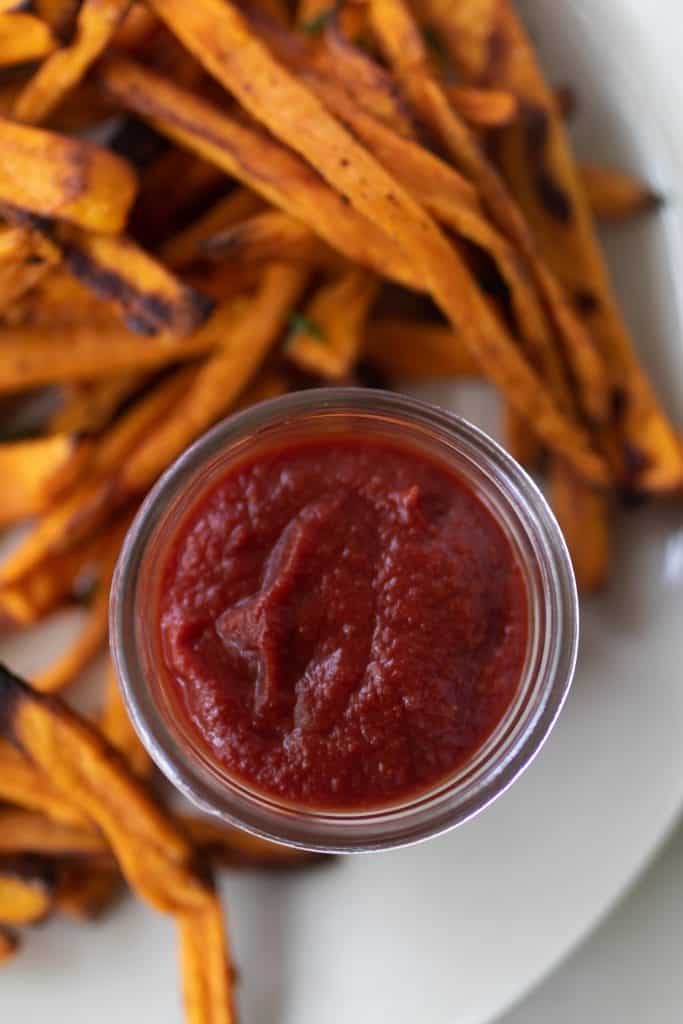
If there is one ferment you may want to start with as a beginner, homemade ketchup is where it’s at.
While I have been fermenting just about every vegetable for awhile now, condiments may be my favorite.
It’s like a sneaky way to get in probiotics with no one noticing.
My kids are far from picky. You will frequently find them asking for sauerkraut, but if there is a way to make something a little healthier, I’ll try it. Like this kefir ranch dressing, which tastes amazing with homemade sourdough pizza, by the way.
This recipe offers a wonderful tangy flavor that tastes amazing with crispy skillet potatoes, grass-fed burgers on homemade sourdough buns, or some sourdough fried chicken.
Since ketchup is basically a drink in our house, being able to serve it up with some gut-healthy bacteria… sign me up.
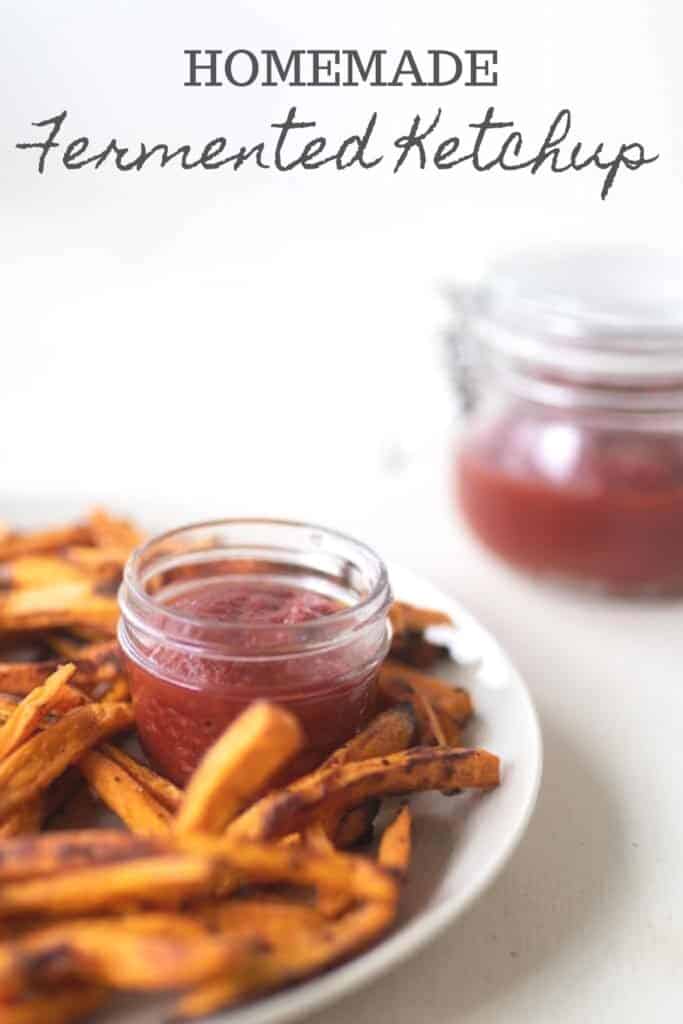
Benefits of Fermented Foods
Fermented foods, like this ketchup, are bursting with gut-healthy probiotics. When the sugars in the tomatoes are combined with a starter brine and allowed a little time, these healthy little organisms populate.
This beneficial bacteria can help increase your gut’s healthy bacteria. Regular consumption of fermented foods has been shown to increase immunity, improve digestion, reduce the risk of cancer, help reduce inflammation, and may even help you keep a healthy weight (source).
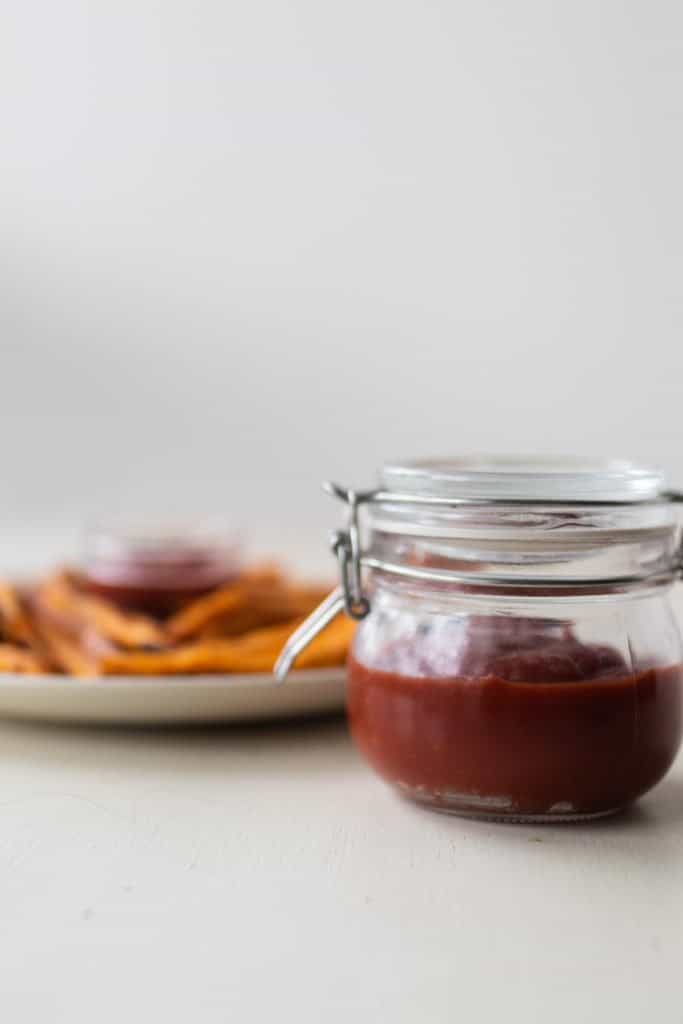
Why you will love this recipe:
Healthy: No refined sugars or weird ingredients you can’t pronounce. Just good, healthy, real food.
Probiotics: Made with brine from a previous ferment (sauerkraut in this case), plus a little time, this recipe adds a nice punch of healthy probiotics.
Delicious: It is packed full of flavor. You won’t be able to go back to the store-bought kind. From the roasted garlic to the tang of fermentation and apple cider vinegar, it has a ton of flavor. Plus, you can add even more seasonings, if you would like.
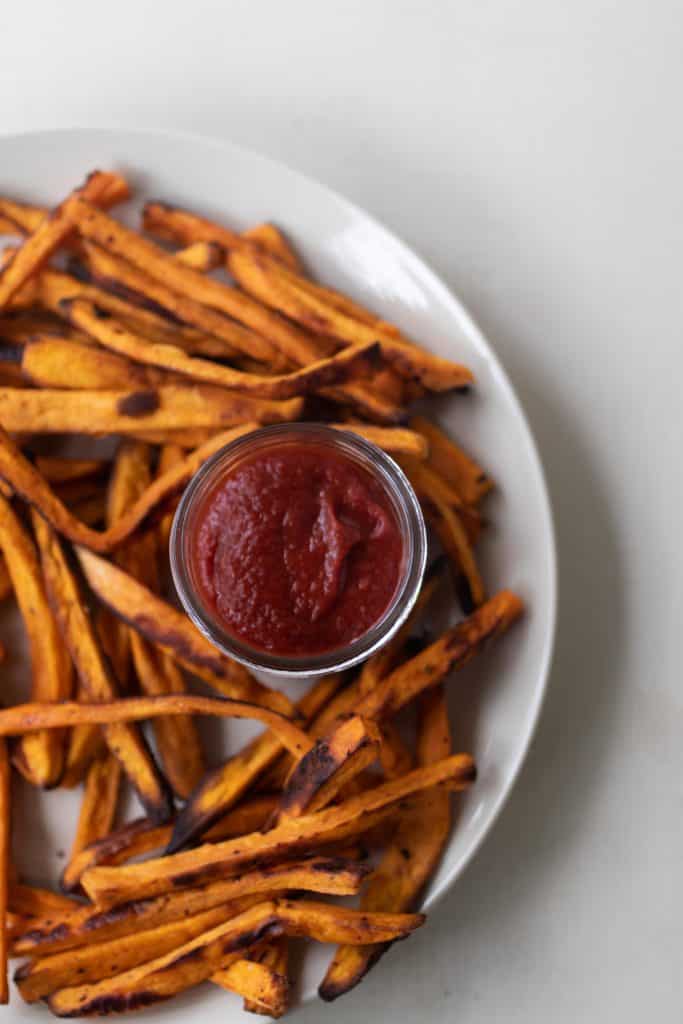
Tips:
- Don’t put ferments in metal bowls or containers, especially more acidic ferments like ketchup.
- Ketchup is a quicker ferment, typically taking only two to three days.
- If you enjoy the flavor of molasses, it adds a deep, rich flavor to the ketchup.
- Get creative with different spice additions. See notes below. This makes a thicker ketchup spread. If you enjoy a thinner ketchup, you can add a tbsp or two of water to thin it out.
This post contains affiliate links, which means I make a small commission at no extra cost to you. See my full disclosure here.
Tools you will need:
Bowl
Measuring cups and spoons
Baking dish
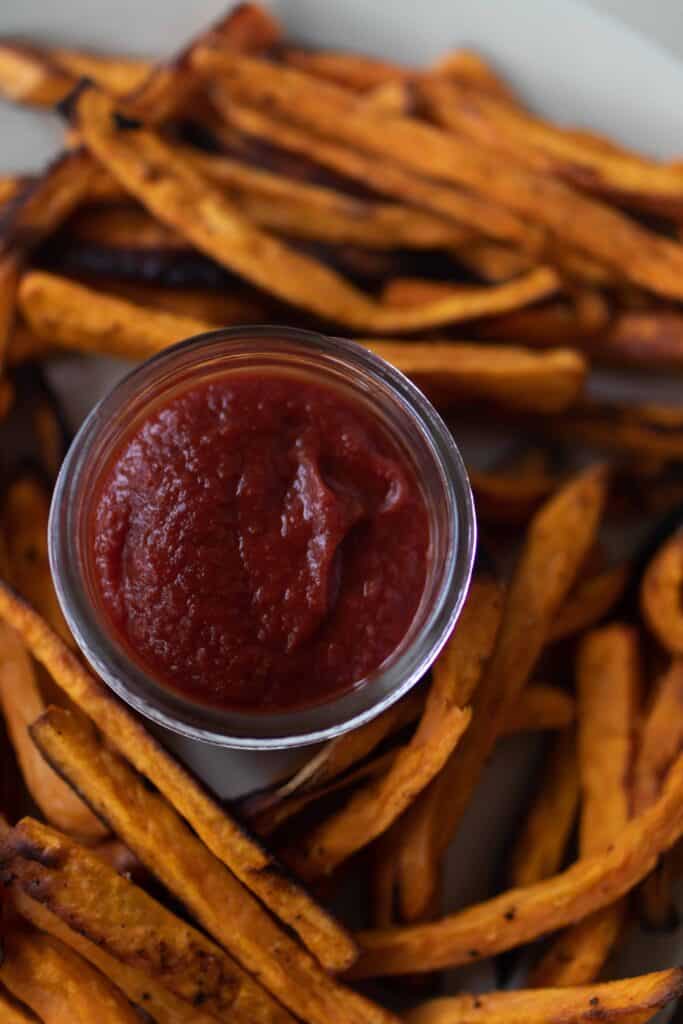
How To Make Fermented Ketchup:
1: Roast Garlic
Preheat oven to 400.
Cut about 1⁄4 inch off the head of garlic to reveal the tops of the garlic cloves.
Drizzle with olive oil. Wrap in foil and put in the oven for 30-40 minutes.
Remove from oven, peel the skins away from the garlic, and mash down to a smooth paste.
2: Mix Remaining Ingredients
In a small bowl, combine tomato paste, starter liquid, sea salt, maple syrup, roasted garlic, worcestershire, and bay leaf.
Transfer mixture to a quart mason jar and take care to keep the sides of the mason jar clean.
Add apple cider vinegar to the surface of ketchup. The vinegar will help to prevent mold growth on the surface.
3: Ferment
Cover tightly with a lid and let ketchup sit at room temperature, away from light, for two to three days.
Taste on day two to determine if your ferment is done or if you’d like it to go another day or two.
When satisfied with the level of fermentation, mix the vinegar on the surface into ketchup, and enjoy.
Place in the refrigerator for storage. It will last a couple of months.
Potential additions:
- Ginger powder
- Chili Powder
- Allspice
- Cinnamon
- Ground Clove
- Mustard powder
- Cayenne
- Onion powder
Find More Delicious Recipes:
- Fermented Hot Sauce
- Fermented Jalapenos
- Easy Artisan Sourdough Bread
- Skillet Pork Chops With Garlic And Butter
- Sourdough Chocolate Zucchini Muffins
If you make this recipe and love it, I would love if you gave it 5 stars! Tag me on Instagram @farmhouseonboone with your delicious creation.
Fermented Ketchup

Ingredients
- 13 oz organic tomato paste
- 4 tablespoons starter liquid, such as whey or brine from sauerkraut or another vegetable ferment
- 1/2 teaspoon good quality sea salt
- 2 tablespoons maple syrup, or molasses
- 1 head roasted garlic, approximately 10 cloves
- 2 teaspoons worcestershire
- 2 tablespoons apple cider vinegar
- 1 bay leaf
Instructions
- Preheat oven to 400.
Cut about 1⁄4 inch off the head of garlic to reveal the tops of the garlic cloves.
Drizzle with olive oil. Place in the oven for 30-40 minutes.
Remove foil and skins, then mash garlic down to a smooth paste. - In a small bowl, combine tomato paste, starter liquid, sea salt, maple syrup, roasted garlic, worcestershire, and bay leaf.
Transfer mixture to a quart mason jar and take care to keep the sides of the mason jar clean.
Add apple cider vinegar to the surface of ketchup.
Cover tightly with a lid and let ketchup sit at room temperature, away from light, for two to three days.
Taste on day two to determine if your ferment is done or if you’d like it to go another day or two.
When satisfied with the level of fermentation, mix surface vinegar into ketchup and enjoy.
Place in the refrigerator for storage. It will last a couple of months.
Notes
- Don’t put ferments in metal containers or bowls, especially more acidic ferments like ketchup.
- This makes a thicker ketchup spread. If you enjoy a thinner ketchup, you can add a tbsp or two of water to thin it out.
Nutrition
Nutrition information is automatically calculated, so should only be used as an approximation.
Pin It For Later
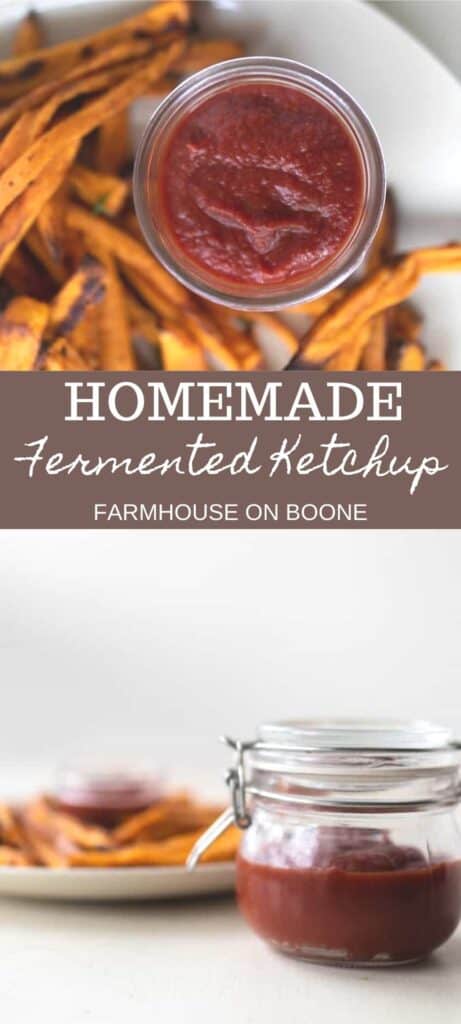

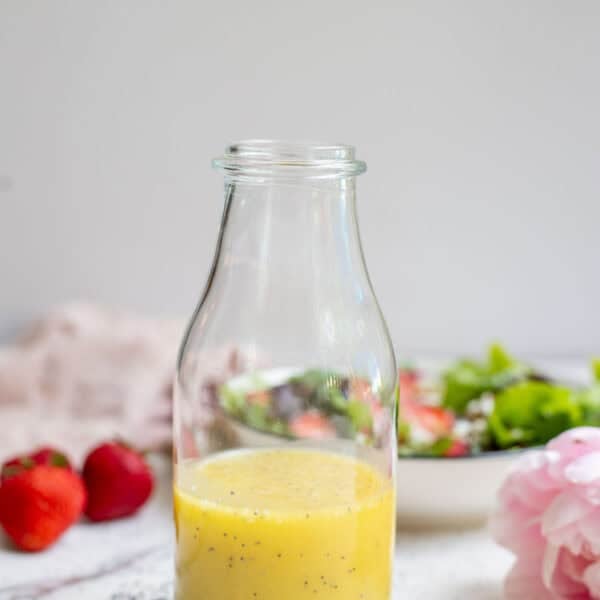
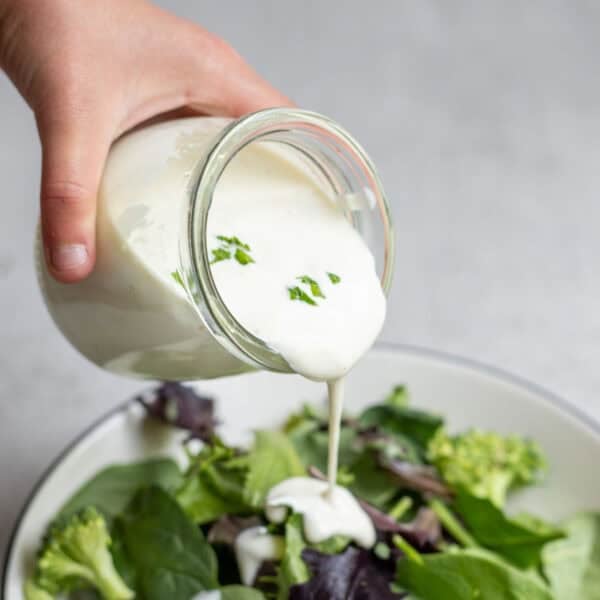
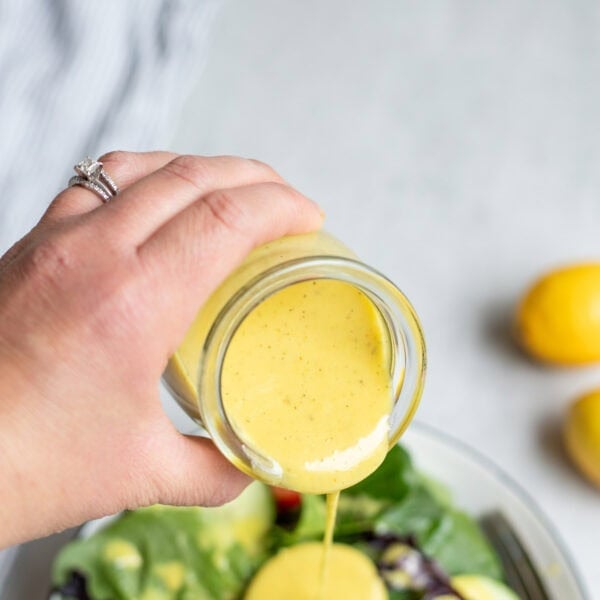






This is delicious. We love to mix-in horseradish with ketchup for extra zest. Thank-you for the recipe!
Question, if using apple cider vinegar, would you need sauerkraut ferment also or is it just for flavor? I make something similar but, have never fermented it. I add onion powder, garlic powder and pumpkin pie spice with the acv and stevia for an even lower carb version and it’s delicious.